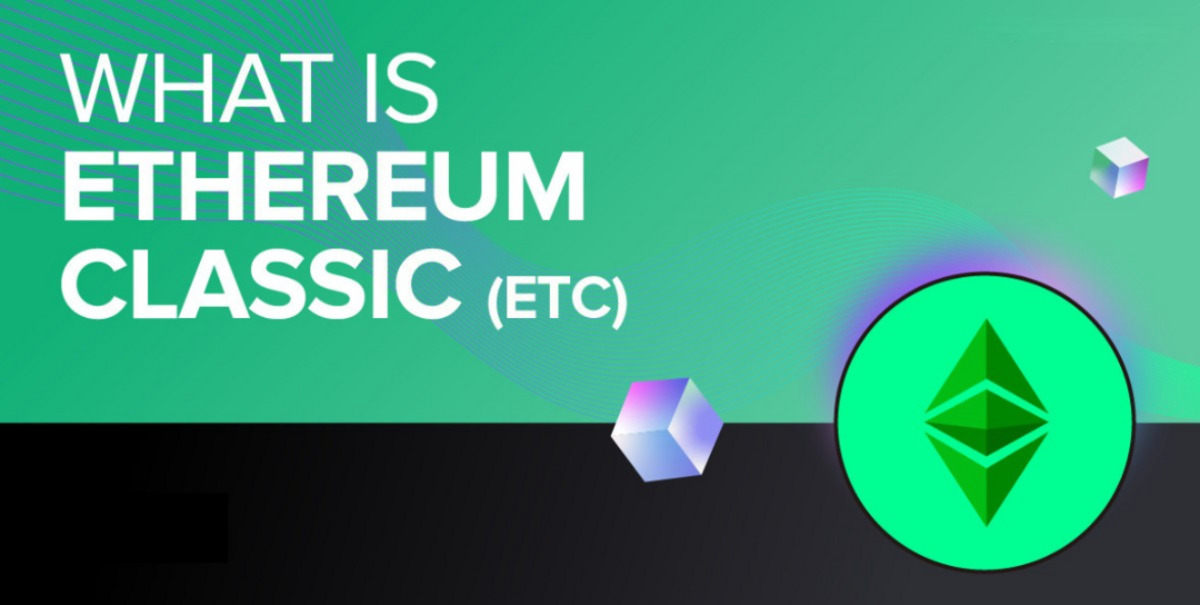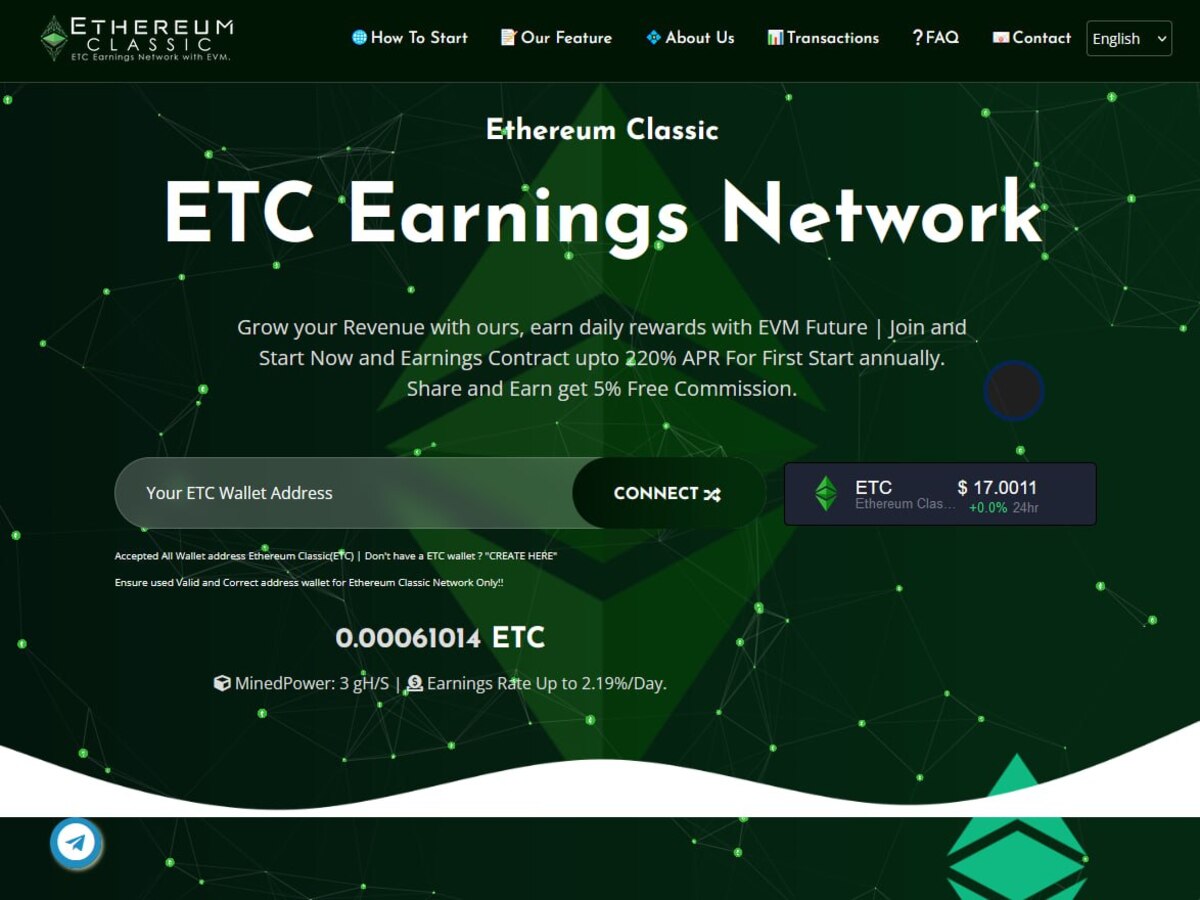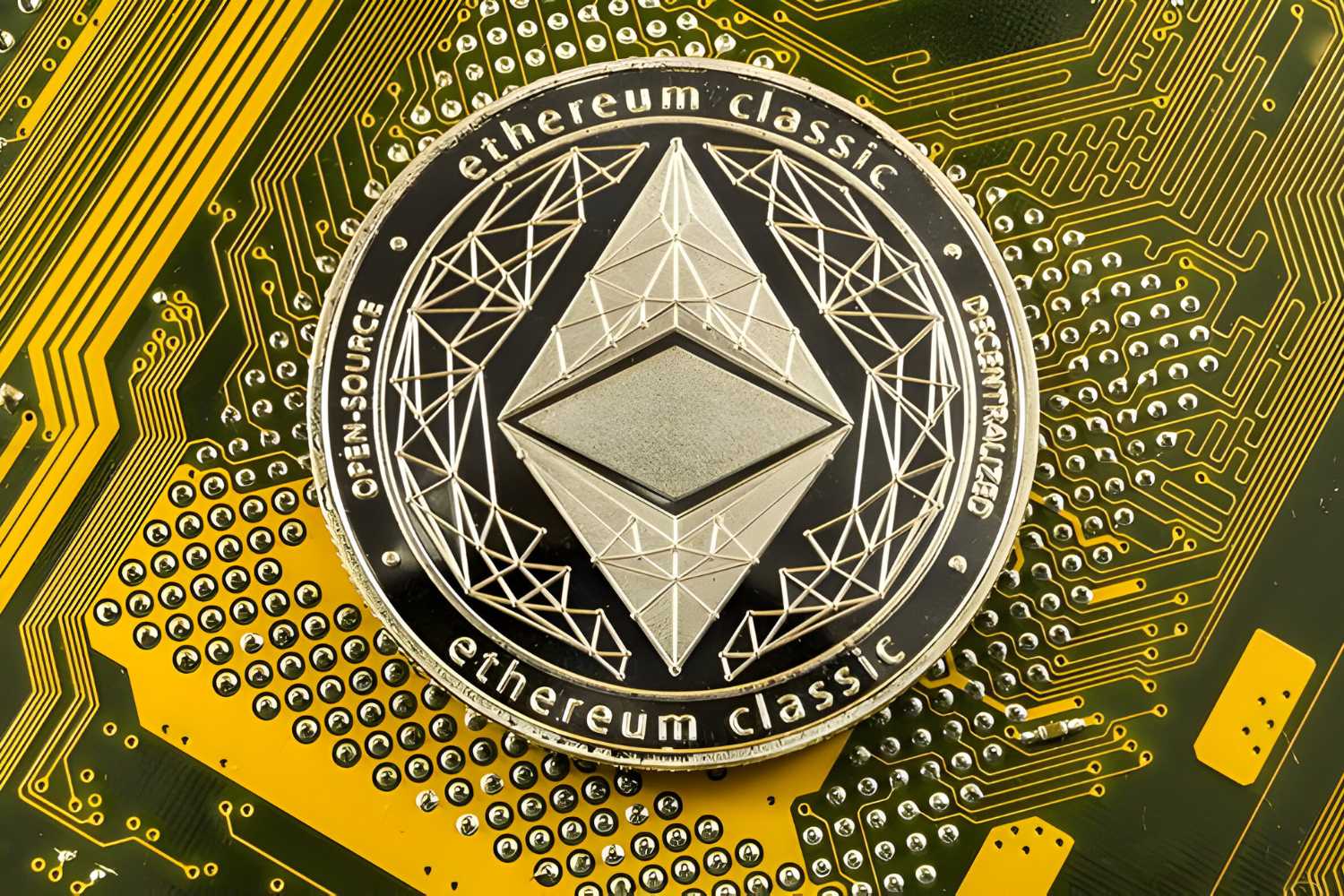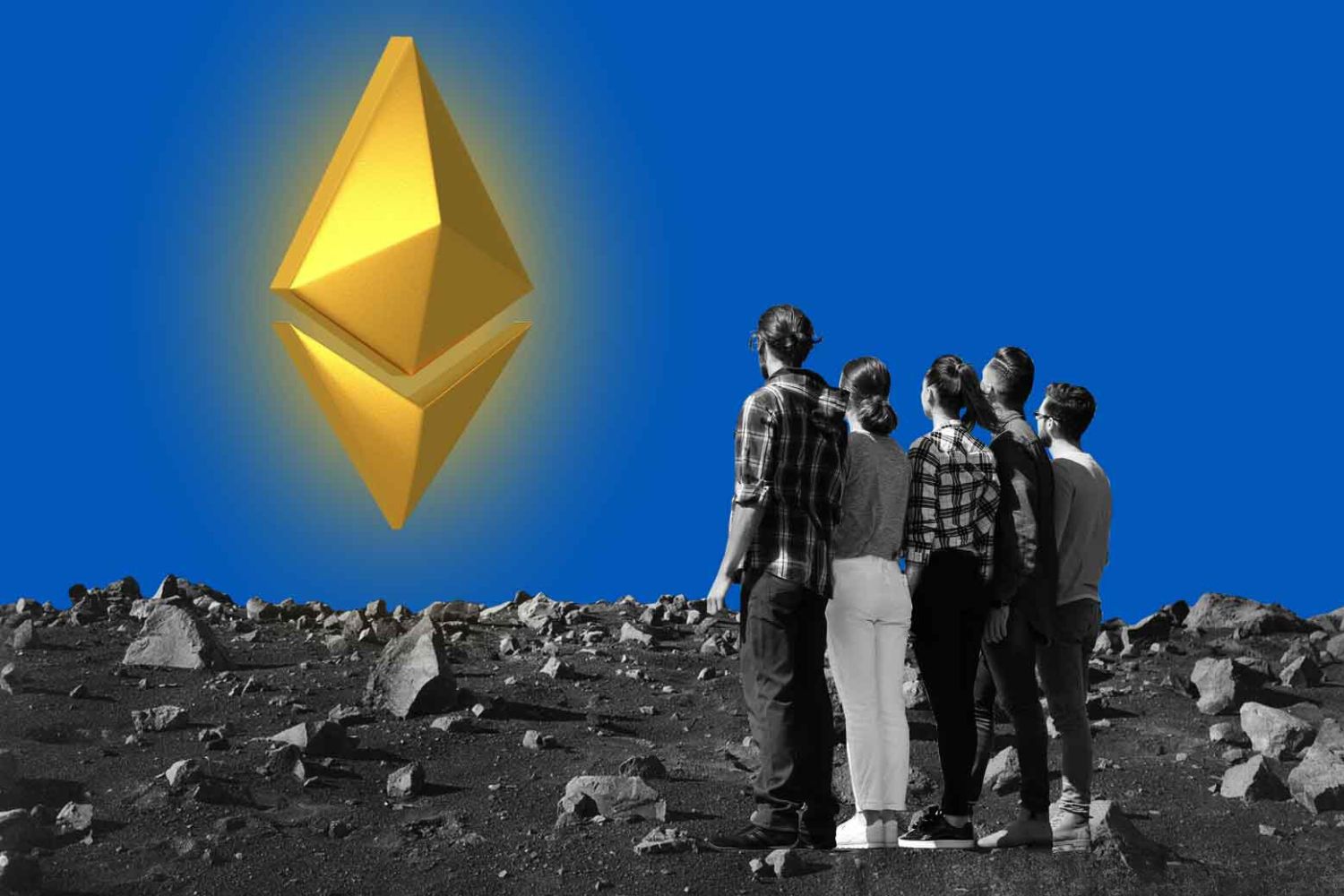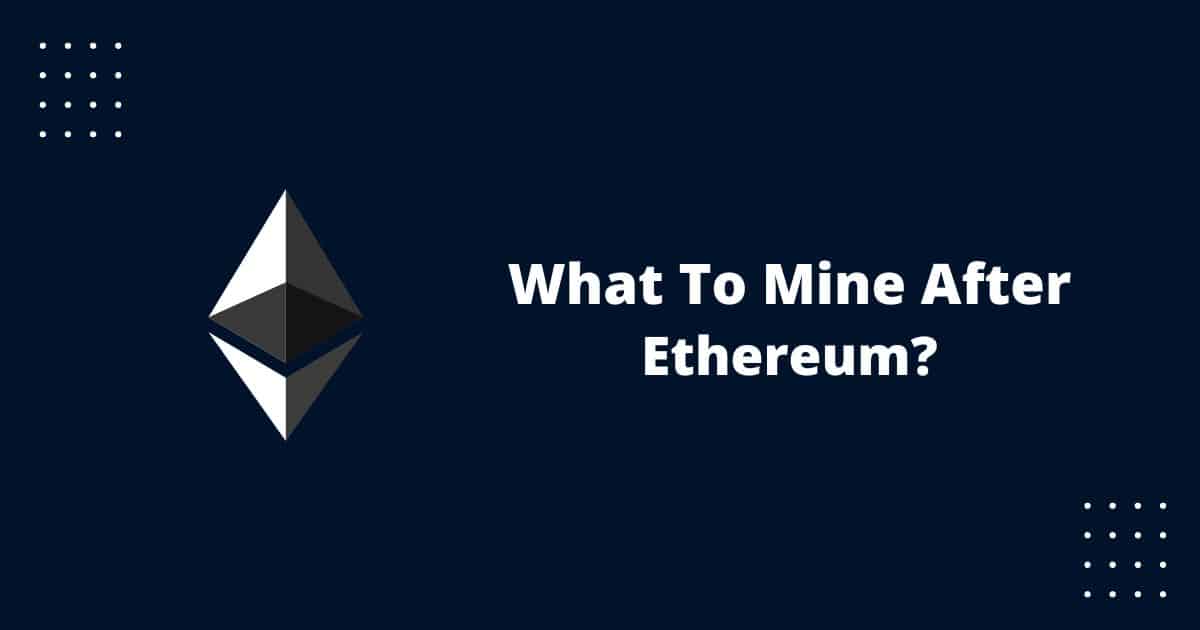Introduction
Welcome to the world of cryptocurrencies, where innovation and disruption go hand in hand. One of the most prominent players in this space is Ethereum Classic, a decentralized blockchain platform that has gained considerable attention in recent years. In this article, we will explore what Ethereum Classic is, its history, the differences between Ethereum and Ethereum Classic, and delve into the philosophy behind it.
Ethereum Classic, often referred to as ETC, is an open-source blockchain platform that enables developers to build and deploy smart contracts and decentralized applications (DApps). It is a continuation of the original Ethereum blockchain after a controversial hard fork in 2016. While the majority of the Ethereum community supported the fork, a faction of developers and users decided to stay true to the principles of decentralization and immutability, giving rise to Ethereum Classic.
To understand Ethereum Classic, we must first examine the history of Ethereum. Ethereum was created by Vitalik Buterin in 2013 as a revolutionary platform that expanded the capabilities of blockchain technology beyond simple transactions. It introduced the concept of smart contracts, which are self-executing contracts with predefined rules and conditions. These contracts operate on the blockchain, allowing for the secure and transparent execution of agreements without the need for intermediaries.
In 2016, Ethereum experienced a significant event known as “The DAO hack.” A decentralized autonomous organization (DAO), built on the Ethereum blockchain, was compromised, resulting in the theft of millions of Ether (ETH). To rectify the situation and recover the stolen funds, the Ethereum community proposed a hard fork that would reverse the transactions related to the hack. This decision, however, sparked a heated debate within the community, with some arguing it went against the core principles of immutability and censorship resistance.
This disagreement led to the creation of two distinct blockchains: Ethereum and Ethereum Classic. Ethereum moved forward with the hard fork, resulting in the new chain known as Ethereum. In contrast, Ethereum Classic adhered to the original blockchain, maintaining its integrity and preserving the principle of immutability.
The primary difference between Ethereum and Ethereum Classic lies in their approach to the DAO hack and code change. Ethereum Classic remained unwavering in its commitment to immutability, refusing to alter the blockchain or reverse any transactions, no matter the circumstances. This rigid stance reflects the core philosophy behind Ethereum Classic – the belief that blockchain should be immutable, free from external interference, and resistant to censorship.
Ethereum Classic’s commitment to immutability is not without controversy. Some argue that it limits the ability to rectify mistakes or address vulnerabilities, potentially hindering the progress of the platform. Others view it as a fundamental principle that ensures the integrity and trustworthiness of the blockchain. Regardless of one’s perspective, Ethereum Classic has carved out its place in the cryptocurrency landscape, attracting developers, investors, and enthusiasts who champion and embrace its core values.
What is Ethereum Classic?
Ethereum Classic is a decentralized blockchain platform that operates on the principles of immutability and censorship resistance. It is an open-source platform that allows for the development and deployment of smart contracts and decentralized applications (DApps) on its secure and transparent blockchain.
At its core, Ethereum Classic aims to provide a robust and reliable infrastructure for creating and executing smart contracts. Smart contracts are self-executing agreements with predefined rules and conditions, eliminating the need for intermediaries and providing a transparent and efficient way to enforce agreements.
What sets Ethereum Classic apart from other blockchain platforms is its commitment to immutability. Immutability means that once a transaction is recorded on the Ethereum Classic blockchain, it cannot be changed or altered. This ensures that the history of transactions remains transparent, secure, and tamper-proof, providing a high level of trust for users.
Ethereum Classic also follows the principle of censorship resistance. This means that no external authority can modify or censor transactions on the network. By removing the need for intermediaries and centralized authorities, Ethereum Classic promotes decentralization and empowers users to have full control over their own financial and digital assets.
In terms of technology, Ethereum Classic is similar to its counterpart, Ethereum. It supports the Solidity programming language, which provides developers with a familiar environment for building smart contracts and DApps. Ethereum Classic also uses the same consensus mechanism, called Proof of Work, where miners compete to solve complex mathematical problems to add transactions to the blockchain.
Unlike traditional payment systems or centralized platforms, Ethereum Classic operates on a global scale without geographical restrictions. Anyone can participate in the network, and transactions take place in near real-time, providing quick and efficient transfers of value.
While Ethereum Classic shares similarities with Ethereum, it maintains its unique identity and principles. It is a testament to the importance of decentralization, immutability, and censorship resistance in the world of blockchain technology.
The History of Ethereum and Ethereum Classic
The history of Ethereum and Ethereum Classic is intertwined, with a significant event known as “The DAO hack” playing a pivotal role in their divergence.
Ethereum, the brainchild of Vitalik Buterin, was introduced in 2013 as a revolutionary blockchain platform that expanded the capabilities of digital currencies. It aimed to go beyond simple transactions and introduced the concept of smart contracts, which are self-executing agreements with predefined conditions.
In 2016, The DAO, a decentralized autonomous organization, was created on the Ethereum platform. The DAO was an investment fund that operated through smart contracts, enabling participants to contribute Ether (ETH) and receive tokens representing their stake in the fund.
However, The DAO was soon subject to a devastating hack. Exploiting a vulnerability in its code, an attacker managed to siphon off a significant amount of funds, totaling millions of Ether.
This event sparked a contentious debate within the Ethereum community. Some argued for a hard fork, which would essentially create a new version of the Ethereum blockchain, in order to recover the stolen funds. Others viewed a hard fork as a violation of the core principles of immutability and censorship resistance.
In the end, the Ethereum community decided to move forward with the hard fork. This resulted in the birth of a new blockchain, Ethereum, which included the recovery of the hacked funds.
However, not everyone agreed with this decision. A faction of developers and users maintained their support for the original Ethereum blockchain, now known as Ethereum Classic. They believed that blockchain should be immutable, and any alteration or censorship of transactions was not acceptable.
Ethereum Classic continued to operate on the original blockchain, preserving the history and ideology that predated the hard fork. This decision was not without its challenges, as Ethereum Classic faced criticisms and skepticism from some quarters. However, it stood firm in its principles and has since gained its own dedicated community, making it a significant player in the cryptocurrency ecosystem.
Both Ethereum and Ethereum Classic have continued to grow and evolve since the split. They have seen advancements in technology, the development of new projects and DApps, and gained wider recognition in the blockchain industry.
Ultimately, the divergence between Ethereum and Ethereum Classic represents a philosophical difference in how blockchain technology should be governed. While Ethereum embraced the concept of reversibility to rectify a major hack, Ethereum Classic stayed true to the core principles of immutability and censorship resistance, providing users with an alternative platform that aligns with these values.
The Difference Between Ethereum and Ethereum Classic
The primary difference between Ethereum and Ethereum Classic lies in their response to the DAO hack and subsequent hard fork. While both platforms share similar origins, they have diverged in terms of their blockchain and community values.
Following the DAO hack in 2016, the Ethereum community decided to implement a hard fork to recover the stolen funds. This hard fork resulted in the creation of a new blockchain known as Ethereum, which included the changes to reverse the fraudulent transactions.
Ethereum Classic, on the other hand, remained true to the original blockchain and philosophy of immutability. It did not support the hard fork and continued with the unchanged blockchain, now known as Ethereum Classic.
The key difference between the two lies in their approach to implementing changes on the blockchain. Ethereum prioritizes the ability to modify the blockchain to rectify major incidents and address vulnerabilities. This flexibility allows for the integration of upgrades, improvements, and new features.
Ethereum Classic, on the other hand, adheres strictly to the principle of immutability. It believes that once a transaction is recorded on the blockchain, it should be permanent and unchangeable under any circumstance. This ensures that the historical record remains transparent and free from manipulation.
This philosophical difference leads to different perceptions of risk and governance. Ethereum’s approach allows for quicker response to issues, but it also introduces the possibility of governance challenges and disagreements regarding future changes to the platform.
Another notable difference between the two is the level of community support and development activity. Ethereum, being the more widely adopted platform, has a larger community of developers, users, and projects. This means that there is a greater variety of tools, resources, and DApps available on the Ethereum network.
Ethereum Classic, though with a smaller community, still has its own dedicated supporters who believe strongly in the principles of decentralization and immutability. It fosters a community that values preserving the original blockchain and promoting strong decentralized applications.
Despite these differences, Ethereum and Ethereum Classic do share some similarities. They both support the programming language Solidity, allowing developers to build and deploy smart contracts and decentralized applications. They also use the same Proof of Work consensus mechanism, where miners compete to solve complex mathematical problems to validate transactions.
While Ethereum and Ethereum Classic may have diverged in terms of their response to the DAO hack, they both continue to play important roles in the blockchain ecosystem. Each platform represents a different approach to governance, immutability, and community values, offering users the freedom to choose the platform that aligns with their principles and goals.
The Philosophy Behind Ethereum Classic
Ethereum Classic is built upon a core philosophy that centers around the principles of decentralization, immutability, and censorship resistance. These principles guide its development, governance, and community values.
At the heart of Ethereum Classic’s philosophy is the belief in decentralization. It advocates for a network where no single authority or entity has control. Instead, it promotes a distributed network of nodes that collectively validate and secure transactions, ensuring that power and decision-making are dispersed among participants.
Immutability is another key principle that Ethereum Classic upholds. Immutability means that once a transaction is recorded on the blockchain, it cannot be altered or reversed. This creates a transparent and tamper-proof record of all transactions, ensuring the integrity and trustworthiness of the blockchain. Ethereum Classic maintains that immutability is crucial for preserving history, upholding the contractual obligations of smart contracts, and preventing censorship or manipulation.
Censorship resistance is closely tied to both decentralization and immutability. Ethereum Classic believes in a network that is resistant to external interference, control, or censorship. It strives to create an environment where transactions cannot be blocked, reversed, or tampered with, ensuring that users have full control over their digital assets and the freedom to engage in secure and transparent transactions.
This commitment to decentralization, immutability, and censorship resistance is not without its critics and challenges. Some argue that by prioritizing immutability above all else, Ethereum Classic may hinder its ability to respond to vulnerabilities, address mistakes, or adapt to changing circumstances. They argue that a certain degree of flexibility may be necessary for the long-term success and development of the platform.
However, proponents of Ethereum Classic argue that sacrificing these principles can compromise the very essence of blockchain technology. They believe that immutability and censorship resistance are fundamental to creating a system that is trustworthy, secure, and free from external control. They view Ethereum Classic as a purist approach to blockchain, immutability, and decentralization.
Furthermore, Ethereum Classic champions the idea that blockchain technology should avoid favoring certain individuals or groups over others. It seeks to create a level playing field where anyone can participate, irrespective of their wealth or social standing, ensuring that the power and benefits of blockchain technology are accessible to all.
The philosophy behind Ethereum Classic resonates with individuals who value the core principles of decentralization, immutability, and censorship resistance. It provides an alternative path in the blockchain ecosystem, supporting a community of developers, users, and projects that are aligned with these values.
While the philosophy behind Ethereum Classic may face criticism and challenges, it serves as a reminder of the ongoing debate around the nature and direction of blockchain technology. By championing its core principles, Ethereum Classic continues to carve out its place in the ever-evolving world of cryptocurrencies and decentralized applications.
The ETC Token and Its Uses
The ETC token is the native cryptocurrency of the Ethereum Classic blockchain. It serves as both a medium of exchange and a unit of value within the network. ETC can be used for a variety of purposes, from facilitating transactions to participating in decentralized applications and supporting the Ethereum Classic ecosystem.
One of the primary uses of the ETC token is to pay for transaction fees on the Ethereum Classic network. When users make transactions or execute smart contracts, they are required to pay a small fee in ETC to incentivize miners to validate and include their transactions in the blockchain. These fees help maintain the security and efficiency of the network.
Furthermore, ETC can be used as a means of transferring value and conducting peer-to-peer transactions. Users can send ETC tokens to one another, whether it’s for personal transfers or commercial transactions. The decentralized nature of the Ethereum Classic network ensures that these transactions are secure, transparent, and without the need for intermediaries.
Another use case for ETC lies in its role within decentralized applications on the Ethereum Classic platform. Developers can create and deploy applications that use ETC as a utility token within their ecosystem. For example, in gaming applications, ETC can be used to purchase in-game items, access premium features, or reward players for their achievements. The ETC token provides a secure and transparent way to manage these digital assets within the application.
Moreover, ETC can also be used for crowdfunding and initial coin offerings (ICOs). Projects launching on the Ethereum Classic network may use ETC to raise funds, allowing investors to acquire tokens that represent their stake or participation in the project. This mechanism, known as a token sale or ICO, has been a popular method for funding blockchain-based ventures.
On a broader scale, ETC serves as a store of value for those who believe in the long-term potential of Ethereum Classic. Holding ETC allows individuals to participate in the growth and success of the ecosystem. As demand for ETC increases, its value may appreciate, providing potential returns on investment for holders.
Additionally, ETC can be used as a means of governance within the Ethereum Classic community. Holders of ETC can participate in voting and decision-making processes regarding proposed changes, upgrades, or improvements to the Ethereum Classic protocol. This gives stakeholders a voice in shaping the future direction of the platform.
In summary, the ETC token has multiple uses within the Ethereum Classic ecosystem. It serves as a medium of exchange, a unit of value, and a means of participating in decentralized applications and crowdfunding. As a utility token, ETC facilitates transactions, incentivizes miners, and contributes to the overall functionality and growth of the Ethereum Classic network.
Perspectives on Ethereum Classic
Ethereum Classic, with its commitment to immutability and decentralization, has garnered diverse perspectives within the blockchain community. These perspectives highlight different viewpoints on the merits and challenges of the Ethereum Classic platform.
Supporters of Ethereum Classic value its unwavering adherence to the principle of immutability. They see it as a fundamental aspect of blockchain technology, emphasizing the importance of maintaining a transparent and tamper-proof record of transactions. They believe that immutability ensures trust and prevents censorship or manipulation, providing a solid foundation for decentralized applications and smart contracts.
Furthermore, proponents of Ethereum Classic argue that immutability contributes to the long-term viability and integrity of the platform. They believe that by preserving the complete historical record of transactions, Ethereum Classic can maintain the highest level of transparency and make it more resistant to external interference.
Another perspective on Ethereum Classic revolves around its commitment to decentralization. Supporters believe that a decentralized network, free from control by any single entity or authority, is a crucial aspect of blockchain technology. They argue that Ethereum Classic’s stance promotes greater democratization and inclusivity, allowing participants from all backgrounds and regions to participate in the network and contribute to its growth.
However, Ethereum Classic also faces criticism and challenges from those who take a different perspective. Some argue that its strict adherence to immutability limits its ability to rectify mistakes or address vulnerabilities. They believe that a certain degree of flexibility is necessary for the platform to adapt and evolve in response to changing circumstances, ensuring its long-term viability and competitiveness.
Moreover, critics point to the smaller community and the potential limitations that may arise from a narrower user base compared to Ethereum. They argue that Ethereum Classic could face challenges in attracting developers, projects, and investors, limiting its overall growth and ecosystem development.
Despite these criticisms, Ethereum Classic has demonstrated resilience and has carved out its place in the blockchain landscape. It has attracted a dedicated community that strongly believes in the core values of decentralization, immutability, and censorship resistance. This community actively contributes to the development of Ethereum Classic, fostering innovation, and engaging in discussions on the platform’s future direction.
Ultimately, Ethereum Classic’s perspectives reflect the ongoing dialogue surrounding the nature and governance of blockchain technology. It presents an alternative path that addresses the concerns of immutability and decentralization, sparking important discussions and encouraging exploration of various approaches to blockchain development and use cases.
Conclusion
Ethereum Classic stands as a testament to the diverse perspectives and approaches within the blockchain ecosystem. It adheres to the principles of decentralization, immutability, and censorship resistance, providing an alternative platform for developers, users, and enthusiasts.
Through its commitment to immutability, Ethereum Classic emphasizes the importance of maintaining a transparent and tamper-proof record of transactions. This principle upholds the integrity and trustworthiness of the blockchain, ensuring the preservation of contractual obligations and preventing censorship or manipulation.
In addition, Ethereum Classic’s focus on decentralization promotes a network where power and decision-making are distributed among participants, fostering a more inclusive and democratic environment. It aligns with the fundamental vision of blockchain technology – to provide a decentralized, peer-to-peer infrastructure that empowers individuals and removes the need for intermediaries.
While Ethereum Classic has faced criticism and challenges, particularly concerning its rigid adherence to immutability, it has garnered a dedicated community of supporters who view these principles as critical to the long-term success and integrity of blockchain technology.
With its native ETC token, Ethereum Classic serves as a medium of exchange, a unit of value, and a means of participating in decentralized applications and governance on the platform. ETC facilitates transactions, incentivizes miners, and contributes to the growth of the Ethereum Classic ecosystem.
Perspectives on Ethereum Classic vary, reflecting ongoing discussions within the blockchain community. Some value its commitment to immutability and decentralization, emphasizing the importance of trust, transparency, and individuals’ control over their digital assets. Others highlight potential challenges and the importance of flexibility to address vulnerabilities and promote innovation.
In conclusion, Ethereum Classic offers a unique perspective on blockchain development and governance. Its adherence to immutability, decentralization, and censorship resistance appeals to those who prioritize the principles of transparency, security, and individual empowerment. While it may face challenges and ongoing debate, Ethereum Classic continues to play a significant role in advancing blockchain technology’s core values.







